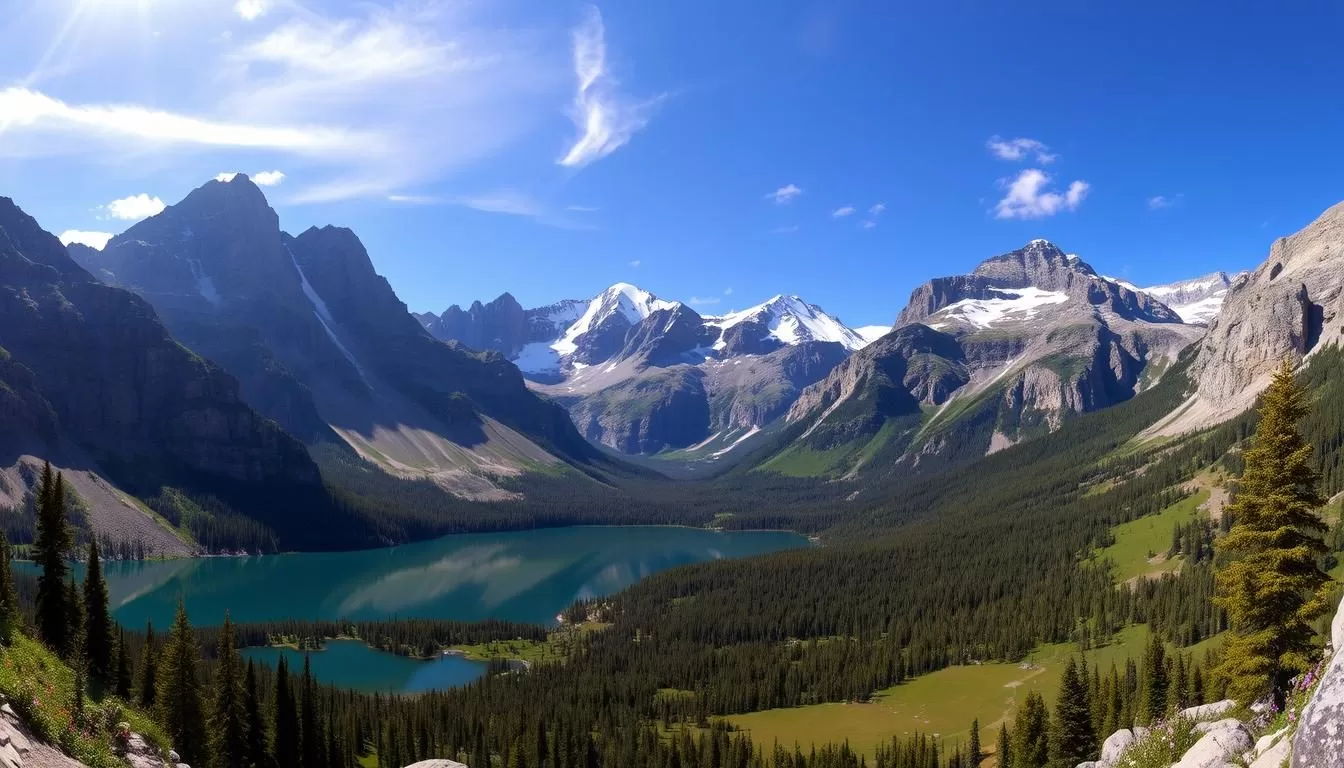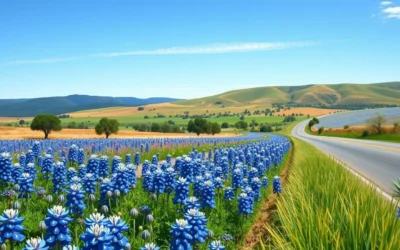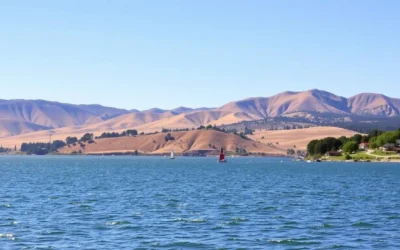✓ Accommodations ✓ Flights ✓ Rental Cars
Welcome to the majestic Rocky Mountains, home to one of America’s most breathtaking national parks. With over 415 square miles of stunning alpine scenery, Rocky Mountain National Park attracts over 4.1 million visitors annually, making it the fifth most visited national park in the United States.
This comprehensive guide will help you plan the perfect adventure in the Rocky Mountain region. You’ll learn about the best time to visit, how long to stay, and the top experiences that make this destination a must-visit for nature lovers. Whether you’re planning a day trip or a week-long adventure, this guide covers everything you need to know to make the most of your time in this natural wonderland.
Discovering the Majesty of Rocky Mountain National Park
Rocky Mountain National Park stands as a testament to the natural beauty of the United States, offering a unique blend of geology and history. As you explore this majestic park, you’ll uncover the rich tapestry of its landscape and the people who have called it home for thousands of years.
Park Overview and Geography
The park’s diverse geography is characterized by towering mountain peaks, alpine lakes, and lush forests.  Spanning over 415 square miles, Rocky Mountain National Park is part of the Rocky Mountains, with elevations ranging from 7,860 to 14,259 feet. The varied landscape supports a wide range of ecosystems, from montane forests to alpine tundras.
Spanning over 415 square miles, Rocky Mountain National Park is part of the Rocky Mountains, with elevations ranging from 7,860 to 14,259 feet. The varied landscape supports a wide range of ecosystems, from montane forests to alpine tundras.
The park’s geology is marked by the presence of glaciers, which have shaped the landscape over millions of years. The result is a dramatic landscape of peaks, valleys, and lakes that attract visitors from around the world to this national parks gem.
Historical Significance
The area now known as Rocky Mountain National Park has a rich human history dating back thousands of years. Prehistoric mammoth hunters roamed the area, followed by the Ute and Arapaho people who summered within the current park bounds until the early 1800s. The park was officially established on January 26, 1915, as part of the growing national parks movement.
- The Ute and Arapaho peoples considered these mountains sacred, using the area as summer hunting grounds.
- In the late 19th century, Estes Park became a destination for adventurers, with early conservationists recognizing the need to protect the area’s natural beauty.
- Today, you can explore historical sites within the park that tell the story of early homesteaders and the development of tourism in the Colorado Rockies.
Planning Your Visit to Rocky Mountain National Park
To experience the best of Rocky Mountain National Park, it’s essential to plan your visit strategically. This involves understanding the best time to visit, the timed entry permit system, and how long you should stay to make the most of your trip.
Best Time to Visit the Rockies
The Rocky Mountains offer a unique experience throughout the year, but the best time to visit depends on your preferences. Summer is ideal for hiking and exploring, while autumn brings the elk rutting season, making it perfect for wildlife enthusiasts. Winter offers a serene landscape for snowshoeing and cross-country skiing, and spring is great for witnessing the park’s wildflowers bloom.
Timed Entry Permit System
Rocky Mountain National Park has implemented a timed entry permit system to manage the number of visitors and reduce congestion. It’s crucial to plan ahead and secure your permit in advance, especially during peak season. The system allows you to choose your entry time, helping you avoid the crowds and make the most of your day.
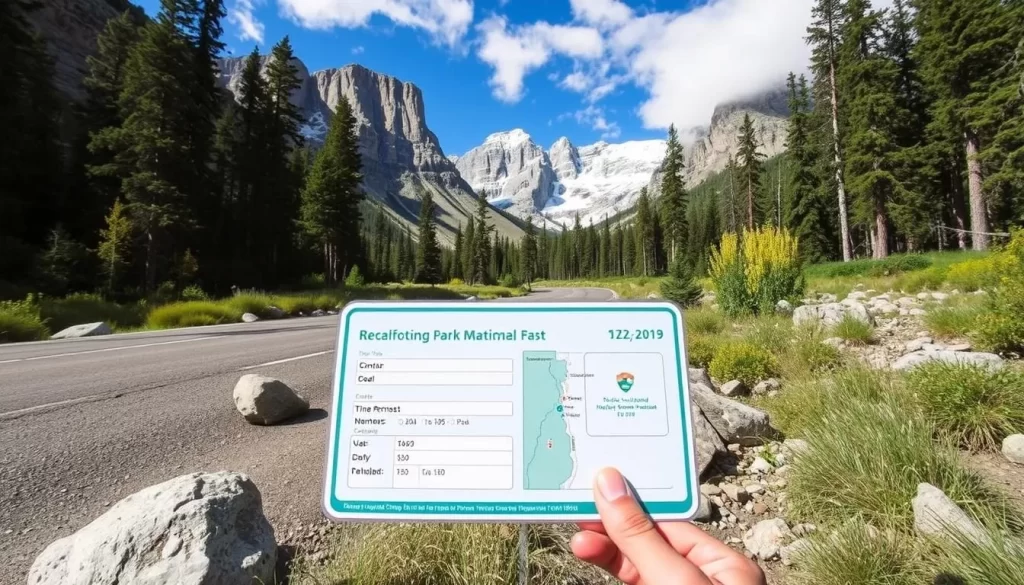
How Long to Stay
Ideally, plan on spending at least three days in Rocky Mountain National Park. This gives you enough time to drive Alpine Ridge Road, Old Fall River Road, and hike a few of the trails. For a more immersive experience, consider the following guidelines:
- For a satisfying experience, stay at least three days to sample the park’s diverse landscapes and attractions.
- A single day allows you to drive Trail Ridge Road and perhaps take a short hike, but you’ll miss many of the park’s highlights.
- Three days gives you enough time to explore both the east and west sides of the park, take several moderate hikes, and enjoy scenic drives.
- Avid hikers should consider spending five or more days to tackle challenging trails, acclimate to the elevation, and have buffer days for weather issues.
- If you’re interested in photography or wildlife viewing, longer stays increase your chances of optimal conditions and memorable encounters.
Getting to Rocky Mountain National Park
The journey to Rocky Mountain National Park begins with understanding your transportation options. The park is located in Colorado, and there are several ways to reach it.
Nearest Airports and Driving Directions
The nearest airport to Rocky Mountain National Park is the Denver International Airport (DEN), which is about 2 hours away by car. From Denver, take US-36 West to reach the park’s east side. You can also fly into Fort Collins Municipal Airport (FNL) or Boulder Municipal Airport (BFM), but DEN is the most convenient for most travelers. Once you arrive, rent a car or shuttle to the park.
Driving directions from Denver: Take US-36 West towards Boulder, then continue on CO-119 to Estes Park. The Beaver Meadows Entrance, the main entrance to the park, is located just off CO-66 in Estes Park.
Park Entrances and Access Points
Rocky Mountain National Park has four main entrance stations. The Beaver Meadows Entrance on the east side is the most popular, near Estes Park. The Fall River Entrance, also on the east side, provides access to the park’s northern section and Old Fall River Road. For a less crowded experience, consider entering through the Kawuneeche Visitor Center on the west side near Grand Lake.
Specialized entrances include the Wild Basin Entrance in the southeast for secluded hiking trails and the Longs Peak Entrance for those planning to climb the park’s highest peak. During peak season, all entrance stations can experience long wait times, so plan to arrive early or later in the afternoon.
Epic Scenic Drives in the Rockies
Embark on an unforgettable journey through the Rockies with its epic scenic drives. The Rocky Mountain National Park offers some of the most spectacular routes that will leave you in awe of nature’s beauty.
Trail Ridge Road: America’s Highest Continuous Paved Road
Trail Ridge Road is a marvel of engineering, stretching through the Rocky Mountain National Park and reaching elevations of over 12,000 feet. This America’s highest continuous paved road offers breathtaking views of alpine lakes, meadows, and mountain peaks.
As you drive along Trail Ridge Road, you’ll experience the diverse ecosystems of the park, from lush forests to alpine tundras. Be sure to stop at the many viewpoints and take in the majestic scenery.

Old Fall River Road: A Historic Journey
For a more rustic experience, take a trip down Old Fall River Road, an 11-mile gravel road that winds its way up to the Alpine Visitor Center. This historic road, which opened in 1920, was the first to lead into Rocky Mountain National Park.
- Old Fall River Road offers a more rustic alternative to Trail Ridge Road, taking you on a historic journey along the park’s first auto route.
- The narrow, one-way dirt road requires slow driving, creating a more intimate experience with the landscape as you ascend 3,000 feet in elevation.
- You’ll pass Chasm Falls, a beautiful waterfall accessible via a short walk from a small parking area.
- The road is typically open from early July to late September, depending on snow conditions.
Both Trail Ridge Road and Old Fall River Road offer unique experiences, allowing you to explore the Rocky Mountain landscape in different ways. Whether you’re looking for a high-altitude drive with modern amenities or a historic, off-the-beaten-path adventure, the mountain national park has something for everyone.
Rocky Mountains, United States: Best Things to Do – Top Picks
The Rocky Mountain National Park is a treasure trove of exciting experiences, offering something for every kind of visitor. Whether you’re interested in hiking, wildlife viewing, or simply taking in the breathtaking views, the Rockies have it all.
Alpine Visitor Center and Alpine Ridge Trail
One of the top attractions in Rocky Mountain National Park is the Alpine Visitor Center, located at an elevation of 11,796 feet. The center provides valuable insights into the park’s alpine environment. Adjacent to the visitor center, the Alpine Ridge Trail offers a moderate hiking experience with spectacular views of the surrounding mountains. Along the trail, you can observe the unique alpine flora and fauna that thrive in this high-altitude environment.
Wildlife Viewing Opportunities
Wildlife viewing is a major highlight of visiting Rocky Mountain National Park. The park is home to a diverse range of wildlife, including elk, bighorn sheep, and moose. Along the way, there is a good chance that you will spot bighorn sheep and elk. To maximize your wildlife viewing experience, consider visiting during the early morning or late evening when animals are most active.
| Wildlife | Best Viewing Times | Locations |
|---|---|---|
| Elk | Dawn, Dusk | Moraine Park |
| Bighorn Sheep | Early Morning | Trail Ridge Road |
Photography Hotspots
The Rocky Mountains offer numerous photography hotspots that are sure to capture your imagination. Some of the top locations include:
- Dream Lake at sunrise, with its perfect reflections of Hallett Peak.
- Many Peaks Curve along Trail Ridge Road, offering panoramic views of the Mummy Range.
- Sprague Lake, featuring an accessible trail with reflections of the Continental Divide.
- Moraine Park, where you can capture elk herds against the backdrop of Longs Peak.
- Forest Canyon Overlook, providing dramatic views of deep valleys and distant peaks.
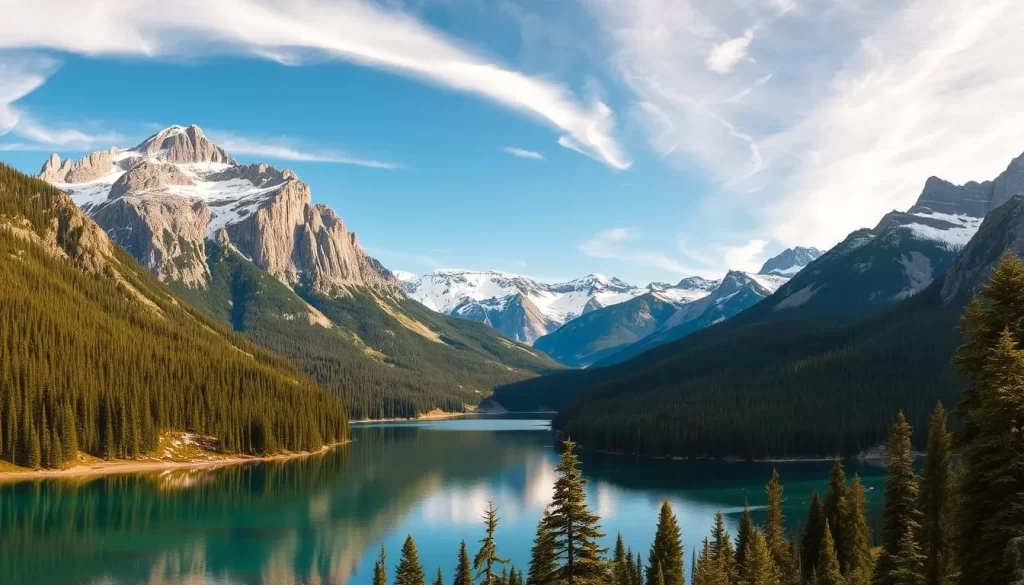
These locations offer a range of photographic opportunities, from landscape and wildlife to macro photography of the unique alpine flora.
Must-Do Hikes for Beginners
Embark on an adventure with the beginner-friendly hikes in Rocky Mountain National Park. The park offers a range of trails suitable for those new to hiking, with scenic landscapes and manageable terrain.
Bear Lake Loop
The Bear Lake Loop is a gentle, 0.8-mile loop that is perfect for families and beginners. This easy hike offers stunning views of the surrounding mountains and the serene Bear Lake.
Alberta Falls Trail
The Alberta Falls Trail is a 3.8-mile out-and-back hike that leads to the picturesque Alberta Falls. This trail is considered easy to moderate and is a great introduction to hiking in the Rocky Mountains.
Nymph, Dream & Emerald Lakes
The Nymph, Dream, and Emerald Lakes trail is a 3.6-mile round-trip hike that takes you through a series of stunning alpine lakes. This hike is easy to moderate, with an elevation gain of about 650 feet. You’ll start at the Bear Lake Trailhead and journey through pine and spruce forests to Nymph Lake, Dream Lake, and finally, Emerald Lake, each with its unique charm and scenery.
- The Nymph, Dream, and Emerald Lakes trail offers a sampler of Rocky Mountain’s alpine lakes.
- Starting from Bear Lake Trailhead, this hike climbs gradually through pine and spruce forests.
- Your first stop will be Nymph Lake, followed by Dream Lake, and the final destination, Emerald Lake.
- This hike is especially magical in early morning light when the lakes are calm and reflective.

Challenging Trails for Experienced Hikers
For experienced hikers, Rocky Mountain National Park offers a range of challenging trails that test endurance and reward with breathtaking views. The park’s diverse terrain and high elevation make these trails suitable for those who are well-prepared and seeking a challenge.
Sky Pond: A Spectacular Alpine Lake
Sky Pond is a stunning alpine lake located in the heart of Rocky Mountain National Park. The trail to Sky Pond is considered challenging due to its steep incline and high elevation. The hike rewards with a picturesque lake surrounded by mountains and a serene atmosphere.
Longs Peak: The Ultimate Challenge
Longs Peak is the ultimate challenge for experienced hikers in Mountain National Park. The 15-mile round-trip hike involves a significant elevation gain of 4,856 feet to reach the 14,259-foot peak. The journey is strenuous, but the panoramic views from the summit are unparalleled.
Mount Ida and Continental Divide Trail

The Mount Ida trail, which spans 9.8 miles round-trip, is a strenuous hike that follows the Continental Divide. Starting at an elevation of 10,759 feet, the trail climbs to the 12,889-foot summit of Mount Ida. Hikers are treated to expansive views of alpine tundra and the Never Summer Mountains.
Weather Considerations and Safety Tips
The weather in Rocky Mountain National Park can be unpredictable, making preparation a must for visitors. Understanding the potential hazards and taking necessary precautions can ensure a safe and enjoyable trip.
Altitude Acclimation
When visiting Rocky Mountain National Park, it’s crucial to acclimate to the high altitude to avoid altitude sickness. Take it easy on the first day, and gradually increase your activity level.
Afternoon Thunderstorms
During summer, afternoon thunderstorms are common in the park. Clouds typically gather around noon, with storms occurring between 1 pm and 3 pm. Be prepared for these storms when hiking in July and August.
Essential Safety Gear
Even on day hikes, it’s essential to carry the Ten Essentials: navigation tools, sun protection, insulation, illumination, first-aid supplies, fire starter, repair kit, extra food, extra water, and emergency shelter. Proper footwear, such as sturdy hiking boots with ankle support, is also crucial.
| Essential Item | Description |
|---|---|
| Navigation Tools | Map, compass, GPS device |
| Sun Protection | Sunscreen, sunglasses, hat |
| Water and Food | Extra water, water filter, non-perishable snacks |
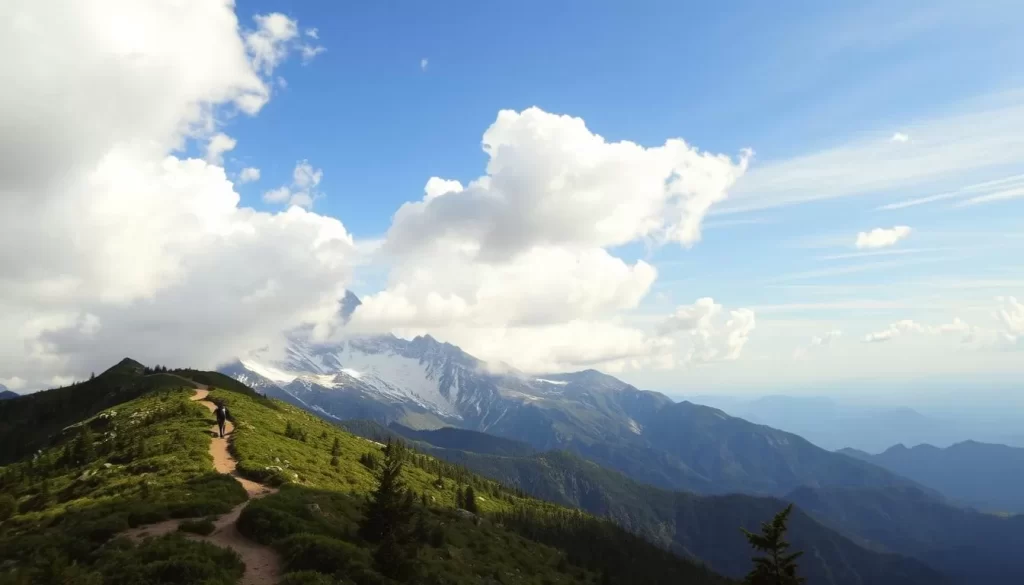
Where to Stay Near Rocky Mountain National Park
Finding the perfect place to stay near Rocky Mountain National Park can enhance your visit. The area offers a variety of accommodations to suit different needs and preferences.
Camping Options Within the Park
For those who enjoy camping, Rocky Mountain National Park provides several camping options. You can make Rocky Mountain National Park camping reservations in advance to ensure a spot.
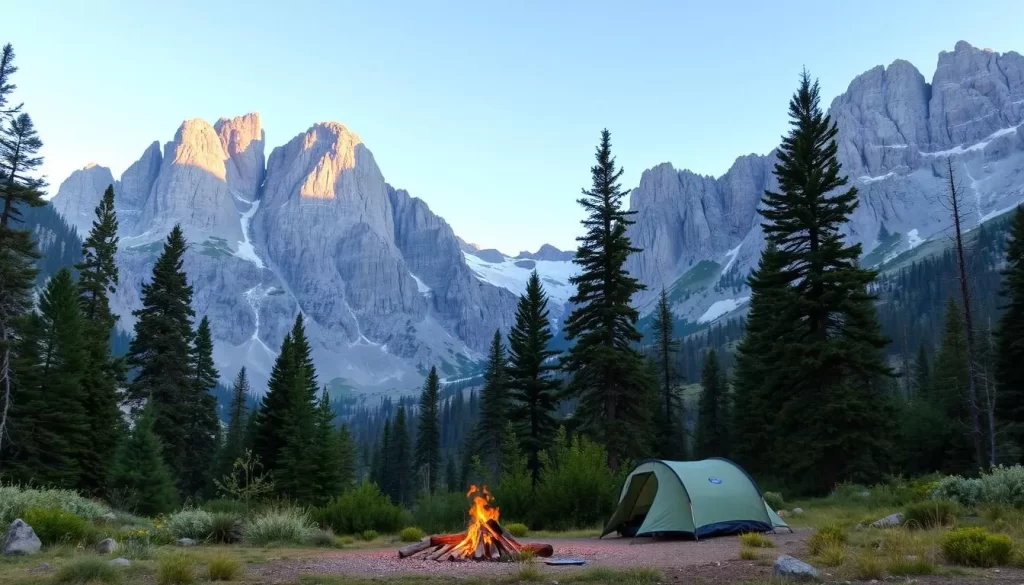
Lodging in Estes Park
Estes Park is a popular choice for lodging, with various hotels and lodges available. It offers a range of amenities and is relatively close to the park’s entrances.
Accommodations in Grand Lake
Grand Lake is another option, located on the western side of the park. It offers a quieter experience and includes the rustic Grand Lake Lodge, which provides lake views, a pool, and accommodations in cabins and glamping-style tents.
Some benefits of staying in Grand Lake include:
- A quieter, more laid-back atmosphere compared to Estes Park.
- Panoramic views of the lake and mountains from the Grand Lake Lodge.
- Numerous lakeside cabins and cottages available for rent, many with private docks.
- The Western Riviera Lakeside Lodging offers motel rooms and cabins with waterfront views.
- Easier access to the less-visited western valleys and the Colorado River headwaters.
Conclusion: Making the Most of Your Rocky Mountain Adventure
Whether you’re a seasoned hiker or just starting to explore the great outdoors, Rocky Mountain National Park has something for everyone. To make the most of your visit, prioritize driving Trail Ridge Road, hiking to at least one alpine lake, and spending time wildlife watching during the golden hours.
Consider visiting during the shoulder seasons to avoid crowds while still enjoying good weather and accessible trails. Remember to stay flexible with your plans due to potential weather changes or trail closures. By respecting wildlife and practicing Leave No Trace principles, you’ll help preserve this magnificent landscape for future generations.
With its diverse landscapes and abundant wildlife, Rocky Mountain National Park offers an unforgettable adventure. Plan your trip, be prepared, and create lasting memories of your Rocky Mountain adventure.
The above is subject to change.
Check back often to TRAVEL.COM for the latest travel tips and deals.
